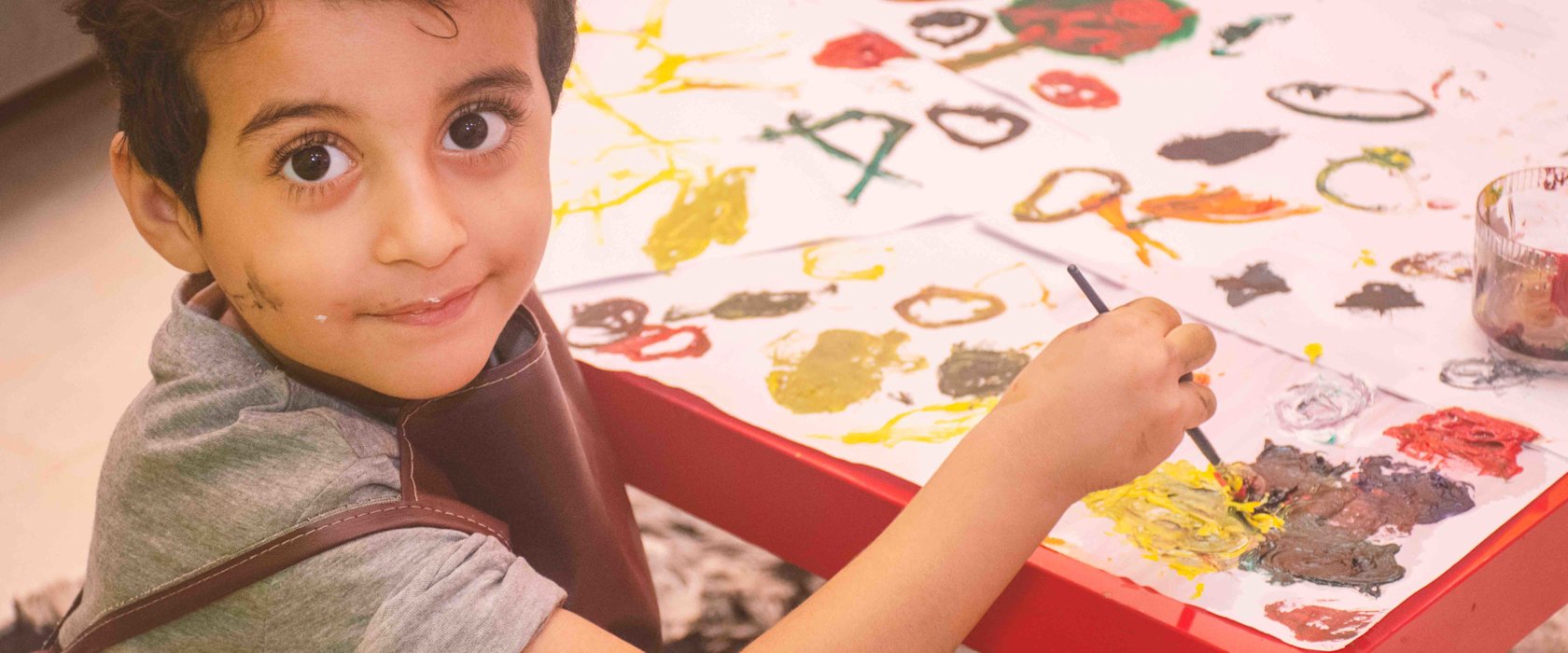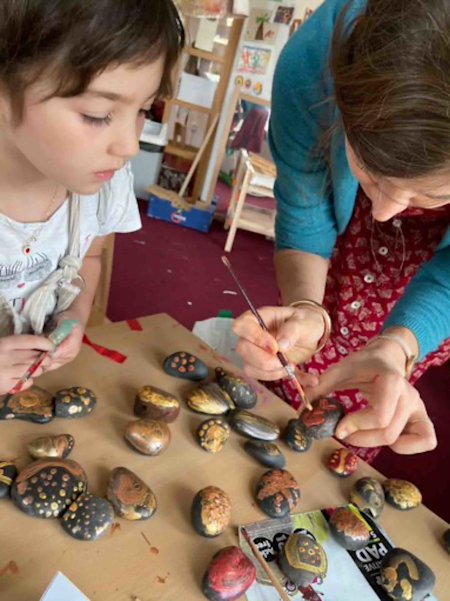Coronavirus (COVID-19) Updates
For the latest COVID-19 information and updates from Qatar Foundation, please visit our Statements page

Image source: Ali Alawartani, via Shutterstock
Artistic freedom goes hand-in-hand with creative thinking, self-expression, and problem solving. And at Qatar Foundation’s Academyati, children are given the opportunity to enjoy art as they want, how they want, and without judgement – with the freedom to color the sun blue, the ocean pink, or the grass red.
And this is because building a generation of curious and innovative children is at the heart of Academyati, which comes under the umbrella of Qatar Foundation’s Pre-University Education.

Foster Itter, a collaborator at Academyati.

Teaching through art.

Building a generation of curious and innovative children is at the heart of Academyati.
“If we put an abstract painting in front of the child, they will immediately notice how the artist has depicted something differently. For example, they will see that Picasso’s faces contain geometric shapes and that Miro paints funny characters using dots and lines,” says Foster Itter, a collaborator at Academyati.
“Then, when they are asked to paint or draw their own piece, they surprise us by creating something different. Learners always find their own unique way of expressing themselves when given space, time, and materials. So here, our main role is to appreciate what they are doing, which will lead to creating a culture of creativity.”
Art enhances a student's capabilities and positively impacts their academic performance by enhancing their management skills, focus, and discipline
“Art enhances a student's capabilities and positively impacts their academic performance by enhancing their management skills, focus, and discipline – and all of these skills extend to other areas of learning. Essentially art is a form of self-expression – a way to manage behaviors and process feelings – and it helps to strengthen the mental wellbeing of children.”
At Academyati, children have the freedom to produce art at any time, in any room, which means that they spend most of their day working creatively. There is also a designated art room that includes more specialized tools and is permanently available to students, as well as a music room and a black box theater.
According to Itter, when it comes to nurturing a child's creativity skills, the biggest debate is how much of a role a teacher should play. For example, if a teacher introduces a piece of clay to a group of children without teaching them how to sculpt the clay and use specific tools, children may feel anxious and confused, unsure of how to realize their creative ideas.
We believe that when we allow our children to explore art, we allow them to explore the world
“Teachers must walk a fine line between providing creative ideas and skills for projects while also giving freedom to learners to use the clay as they like, and to choose the shape, color, and content of their creation,” says Itter. And, according to Itter, this is how things work in Academyati – avoiding rules and trusting students.
Part of Academyati’s ethos is encouraging students to use their hands, to build and problem-solve, not just to listen and learn passively. But what happens now, with the country reverting to e-learning?
“Research indicates that using our hands gives us a feeling of happiness, which is why we enjoy activities such as cooking and wood-craft. With online learning, we continue our work in promoting innovation by encouraging our learners to submit any project they are engaged with at home, from cooking bread to going for bike ride.
Pencils, paper, and art tools should be within reach of children. The child should know that they are always available to him, and we should not set a time for practicing art
“Our curriculum is based on providing children with project ideas – learners will then do what interests and engages them. We regularly send home boxes of creative materials like paper, paint, clay, glue, as well as paper straws, pipe cleaners, and cardboard.
“Today, art surrounds us – images and visuals are everywhere. Pictures, photos, colorful text—it is part of how we communicate. And fortunately, parents of students at Academyati appreciate what we do. We believe that when we allow our children to explore art, we allow them to explore the world.”
According to Itter, students nowadays have access to amazing art and craft resources from the internet and social media channels. There are many videos where students can teach themselves new skills, such as knitting, jewelry making, and illustration. And the home is a perfect environment to do this, with parents playing a role in supporting their child’s passion.
“Pencils, crayons, paper, and art tools should be within reach of children. The child should know where they are and that they are always available to him, and we should not set a time on practicing art,” Itter says.
“Let them mess around, mix things up, explore. They need to feel comfortable, not be afraid, experiment and refine in their own artistic endeavors.”






